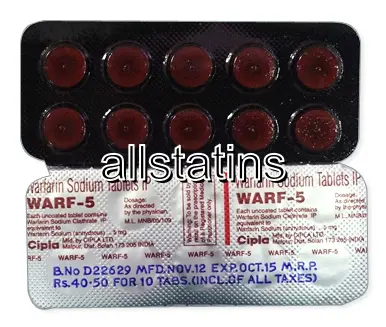| Package | Dosage | Price | Price per Dose | |
|---|---|---|---|---|
| Dosage: 1mg | ||||
| 360 pill | 1mg | NZD557.49 | NZD1.55 | |
| 180 pill | 1mg | NZD306.61 | NZD1.70 | |
| 120 pill | 1mg | NZD229.17 | NZD1.92 | |
| 90 pill | 1mg | NZD182.71 | NZD2.04 | |
| 60 pill | 1mg | NZD133.16 | NZD2.20 | |
| 30 pill | 1mg | NZD71.21 | NZD2.38 | |
| Dosage: 2mg | ||||
| 360 pill | 2mg | NZD669.00 | NZD1.86 | |
| 180 pill | 2mg | NZD362.36 | NZD2.01 | |
| 120 pill | 2mg | NZD260.15 | NZD2.17 | |
| 90 pill | 2mg | NZD210.59 | NZD2.35 | |
| 60 pill | 2mg | NZD157.93 | NZD2.63 | |
| 30 pill | 2mg | NZD89.79 | NZD3.04 | |
| Dosage: 5mg | ||||
| 360 pill | 5mg | NZD746.43 | NZD2.08 | |
| 240 pill | 5mg | NZD526.52 | NZD2.20 | |
| 180 pill | 5mg | NZD439.79 | NZD2.45 | |
| 120 pill | 5mg | NZD334.48 | NZD2.79 | |
| 90 pill | 5mg | NZD278.73 | NZD3.10 | |
| 60 pill | 5mg | NZD188.91 | NZD3.13 | |
| 30 pill | 5mg | NZD99.08 | NZD3.31 | |
| 20 pill | 5mg | NZD71.21 | NZD3.50 | |
| 10 pill | 5mg | NZD34.04 | NZD3.53 | |

Warfarin Description
Understanding Warfarin: An Overview
Warfarin is a widely used oral anticoagulant medication prescribed to prevent and treat blood clots. It is often recommended for patients at risk of deep vein thrombosis (DVT), pulmonary embolism, atrial fibrillation, and certain heart valve conditions. Its primary function is to inhibit the synthesis of vitamin K-dependent clotting factors, which are essential for blood coagulation. By doing so, warfarin effectively reduces the formation of harmful clots, lowering the risk of stroke and other serious complications.
How Warfarin Works
The medication interferes with the body's ability to produce vitamin K-dependent blood clotting factors, including factors II, VII, IX, and X. This interference results in a slower blood clotting process, which is beneficial in preventing the formation of abnormal clots. However, it also means that patients need to monitor their blood's clotting ability regularly. The effect of warfarin can vary based on diet, medication interactions, and individual metabolic differences, making careful management essential.
Benefits and Effectiveness
Many patients find warfarin highly effective in reducing the risks associated with blood clots. It has a long track record of safety when used correctly and monitored consistently. Warfarin's ability to be tailored to individual dosing regimens makes it suitable for long-term therapy. It is particularly advantageous in conditions where reversible and controllable anticoagulation is necessary. Despite newer anticoagulants entering the market, warfarin remains a preferred choice for certain patient populations.
Possible Side Effects and Risks
As with any medication, warfarin comes with potential side effects. The most common adverse effect is bleeding, which can range from minor bruising to severe hemorrhages. Patients must be vigilant for signs of bleeding, such as unexplained bruises, blood in urine or stool, and unusual pain or swelling. Allergic reactions are rare but possible. Due to its narrow therapeutic window, overdose can lead to serious bleeding complications, requiring prompt medical attention. Regular blood tests, such as the INR (International Normalized Ratio), are critical to maintaining safe and effective dosing.
Precautions and Interactions
Warfarin's effectiveness can be influenced by various factors, including diet, other medications, and certain health conditions. Patients are advised to maintain a consistent intake of vitamin K-rich foods like leafy greens to prevent fluctuations in anticoagulation levels. Numerous drugs, including antibiotics, antifungals, and other blood thinners, can interact with warfarin, altering its effectiveness or increasing bleeding risk. It’s crucial for patients to inform their healthcare providers about all medications they are taking. Regular monitoring and dose adjustments help minimize risks and optimize benefits.
Usage and Administration
Usually, warfarin is taken once daily, with dosage individualized based on regular INR testing. Patients should follow their healthcare provider's instructions carefully. Consistency in timing and dosage is key to effective treatment. Patients should avoid abrupt changes in diet or medication without consulting their doctor. It is also important to try to stay within the same brand or formulation to ensure consistency in blood levels. In case of missed doses, guidance from healthcare professionals should be followed promptly.
Conclusion
Warfarin remains a cornerstone in anticoagulant therapy for many patients around the world. Its proven efficacy in preventing and treating serious blood clotting disorders makes it a valuable medication. However, its use requires strict monitoring, careful management of potential interactions, and patient education to maximize benefits and minimize risks. When used properly, warfarin can significantly improve health outcomes for individuals at risk of clot-related complications.
